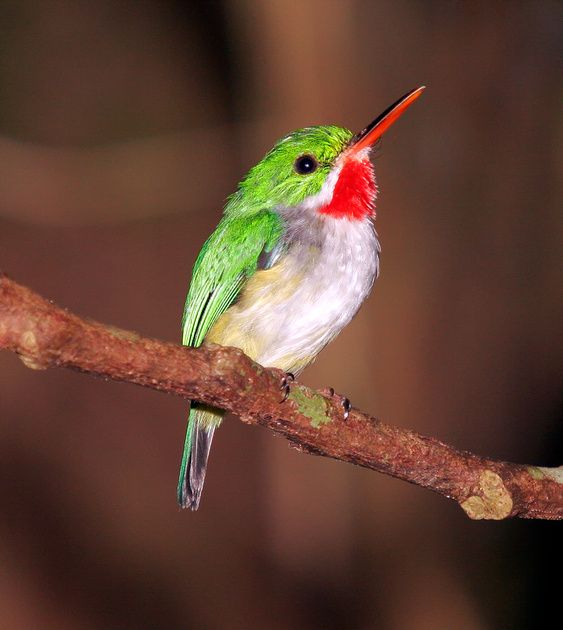The merlin (Falco columbarius) is a small species of falcon from the Northern Hemisphere, with numerous subspecies throughout North America and Eurasia. This compact, dashing falcon has a relatively square-cut tail and rather broad-based pointed wings, shorter than those of other falcons. Its wingbeat tends to be rapid with occasional glides, wings held close to the body. The Merlin is second only to the peregrine falcon, cruising at speeds in excess of 70 kilometres per hour. Merlins breed in open and semiopen areas across northern North America. The boreal subspecies usually nests near forested openings, in fragmented woodlots, near rivers, lakes, or bogs, and on lake islands. The Pacific Northwest subspecies seems to nest mostly in coastal areas and along rivers. The prairie subspecies nests in shrubs and trees along rivers and in small groves of deciduous trees planted as wind breaks. Merlins are increasingly breeding in towns and cities, where they often take over crow nests in conifers planted in residential areas, schoolyards, parks, and cemeteries. During migration Merlins stop in grasslands, open forests, and coastal areas. They winter in similar habitat across the western United States and southern United States, along the Pacific coast to Alaska, and along the Atlantic coast to southern New England. Their wintering range extends south through Latin America as far as Ecuador. Merlins eat mostly birds, typically catching them in midair during high-speed attacks. They often specialize on hunting a couple of the most abundant species around; prey are generally small to medium-sized birds in the 1–2 ounce range. Common prey include Horned Lark, House Sparrow, Bohemian Waxwing, Dickcissel, Least Sandpiper, Dunlin, and other shorebirds. They don’t stoop on birds the way Peregrine Falcons do; instead they attack at high speed, horizontally or even from below, chasing the prey upwards until they tire. Other prey include large insects such as dragonflies, bats caught at cave openings, nestling birds, and small mammals. Merlin pairs have been seen teaming up to hunt large flocks of waxwings: one Merlin flushes the flock by attacking from below; the other comes in moments later to take advantage of the confusion. Adult merlins may be preyed on by larger raptors, especially peregrine falcons (F. peregrinus), eagle-owls (e.g., great horned owl, Bubo virginianus), and larger Accipiter hawks (e.g., northern goshawk, A. gentilis). In general however, carnivorous birds avoid merlins due to their aggressiveness and agility. During the breeding season they are highly territorial around the nest, chasing away other Merlins and potential predators. Merlins are monogamous during a breeding season, but 80 percent find new mates from year to year. When courting, Merlins (particularly males) perform spectacular flight displays, including bursts of strong, level flight while rocking side to side in the air; deep U-shaped dives; and slow, fluttering flights in a circle or figure-eight near to a perched mate. Both sexes claim their territory by soaring high in the air near their nest. Males also make a slow landing next to their mate, keeping their legs outstretched, bowing the head, and fanning the tail; he may bring food for the female. Outside of the breeding season, Merlins are usually solitary. However, they sometimes migrate in loose groups, roost communally, or spend the winter in pairs. Adults may be preyed on by Peregrine Falcons, Great Horned Owls, Cooper’s Hawks, and Red-tailed Hawks. Both sexes give a shrill, chattering call that can last 4 seconds. It’s used in courtship as well as aggressive situations. Merlins also have a short chip note used as a contact call and in courtship displays. The male’s is higher pitched than the female’s. Here is a link so you can listen to this bird too.
This one looks so cool
Yea…. I hope to see it one day


